We were hugely heartened by the opportunity to join the volunteer NeuroChem Lab and meet with over twenty awesome young students from the British International School in Gaza (BIS Gaza).
It’s horrifying and heartbreaking to witness the ongoing genocide of Palestinian people by the government of Israel, aided, abetted and funded by the government of the United States. Of course the horror is exponentially worse for those under assault.

RESISTIR. Cecilia Araneda Tapia. 7/10/2024
LEARN MORE: Sewing Memories, & Brains
As June Jordan wrote many years ago in her poem Apologies to All the People in Lebanon:
“Yes, I did know it was the money I earned as a poet that
paid
for the bombs and the planes and the tanks
that they used to massacre your familyBut I am not an evil person
The people of my country aren’t so badYou can expect but so much
from those of us who have to pay taxes and watch
American TVYou see my point;
I’m sorry.
I really am sorry.”
LEARN MORE: Israeli necropolitics and the pursuit of health justice in Palestine
LEARN MORE: Civilian mortality and damage to medical facilities in Gaza
“I know I’m American because when I walk into a room something dies.”
–Noor Hindi
There are extraordinary people everywhere, many facing unthinkable challenges and yet enthused and energized by learning, teaching, making and experiencing art, exploring brains and connecting and collaborating with each other and with people across the world.

From Abdulrahman Abou Dahesh, a Fulbright Scholar and Neuroscience Graduate Student at the University of Texas at Dallas, and the founder of Neurochem Lab: “Neurochem Lab has provided neuroscience programs for elementary and middle school students at BIS Gaza, and Noggins will join as guest hosts to facilitate their found object brain cells outreach project…”
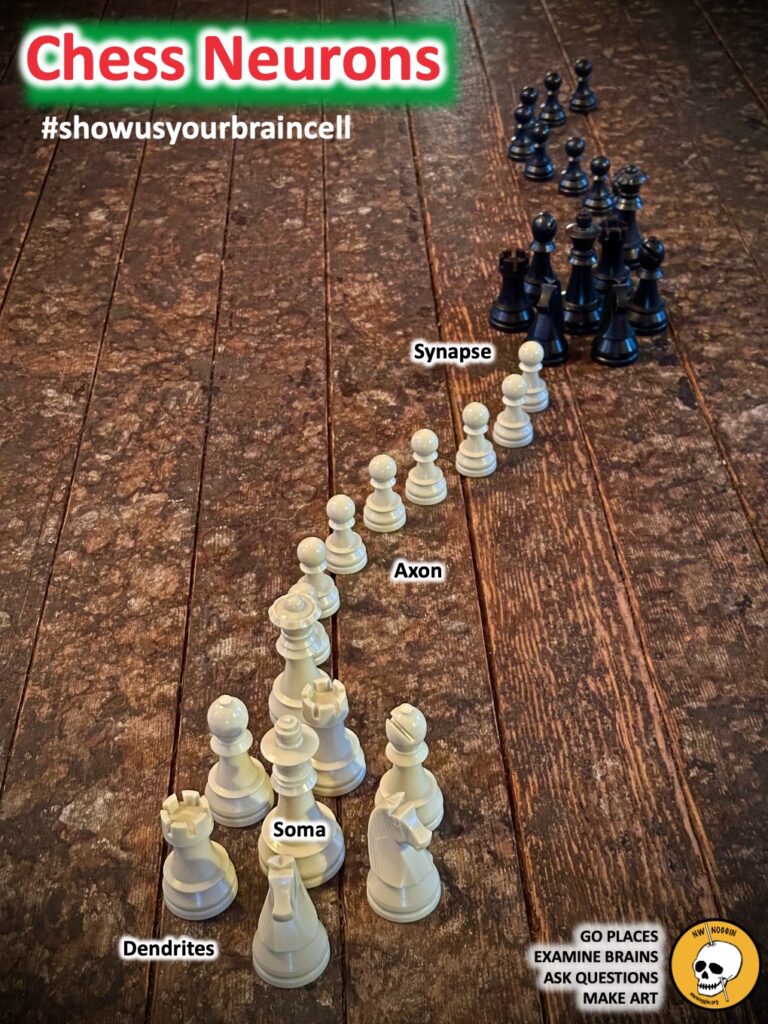
LEARN MORE: NeuroChem Lab
LEARN MORE: Teaching Neuroscience to Children Through Art Projects
“Elementary and middle school students will attend. The audience will be Palestinian students either in Gaza or those who have evacuated to Egypt…Now that a ceasefire is in place, the children are hopeful, and are excited to get back to learning. Yet, the emotional impact of the war persists, and the neuroscience activities we will provide will hopefully support them.”
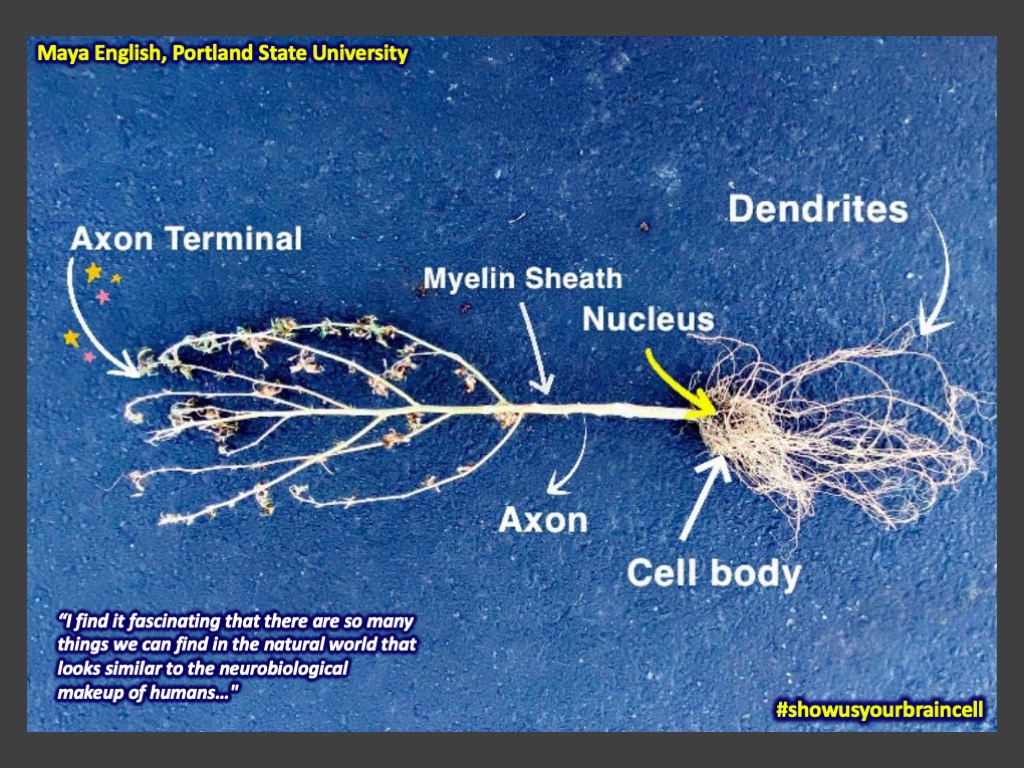
LEARN MORE: Found Object Brain Cells
We spent THREE absolutely wonderful mornings with over twenty curious young students from BIS, whose school buildings were destroyed by Israeli bombing.

LEARN MORE: Gaza war: ‘Direct hits’ on more than 200 schools since Israeli bombing began
LEARN MORE: EDUCATION UNDER ATTACK IN GAZA, WITH NEARLY 90% OF SCHOOL BUILDINGS DAMAGED OR DESTROYED
LEARN MORE: UN condemns deadly West Bank airstrike, attacks on Gaza schools
LEARN MORE: The Reality of Gaza’s Fragile Ceasefire
First Visit in February
We gathered first in February with smiles and excitement, and students joining from satellite uplinks and cellphones in Egypt and the Gaza Strip. During this visit, there were many powerful questions.
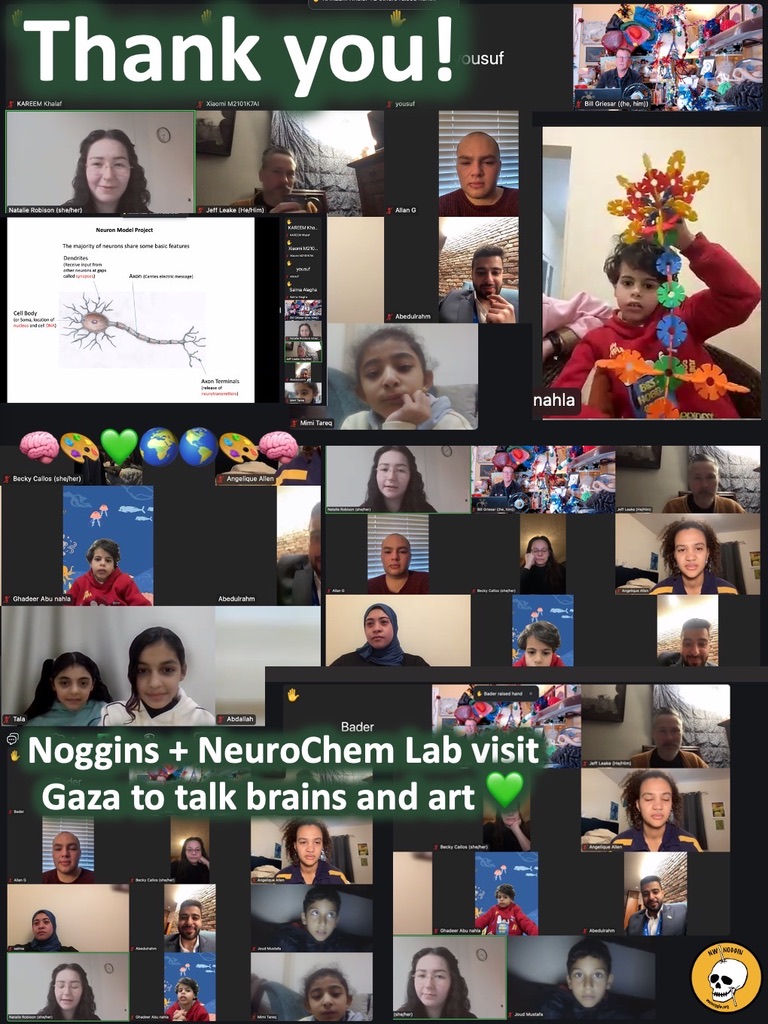
The children were particularly interested in quieting their racing thoughts before bed, and were curious to learn about the brain and experiences of fight or flight panic, as well as memory, sleep, development, autism, and the power of music and art to help us heal from traumatic experiences.
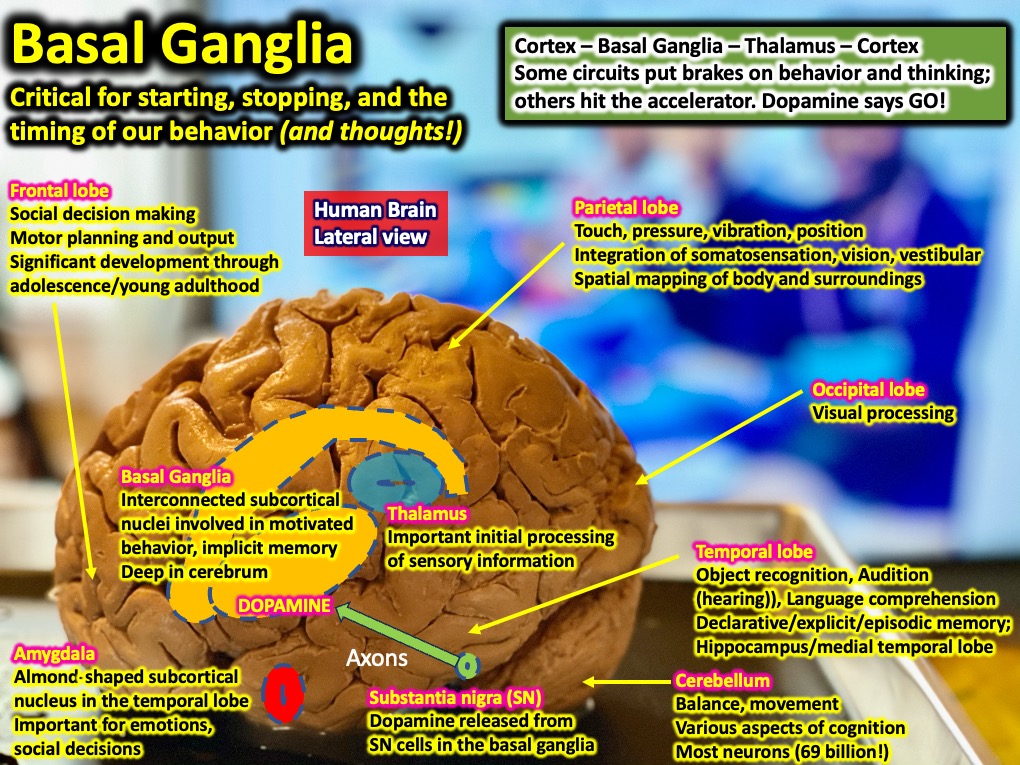
LEARN MORE: A Critical Study of Contemporary Palestinian Musical Culture
LEARN MORE: There’s a tail in your brain!
Why are my thoughts racing before bed?
“Given the disruptive and distressing nature of these students’ nightmare disturbance, we suggest that increasing self-efficacy in relation to the experience of recurrent nightmares may be a good point of intervention with these recurrently traumatized youth. Thus, increasing the understanding of students’ nightmare symptoms may lead to ameliorating the suffering of youths in war zones and may have positive effects on their school functioning.” – Gerlinde C. Harb & Jon-Håkon Schultz (2020)
LEARN MORE: The nature of posttraumatic nightmares and school functioning in war-affected youth
LEARN MORE: Sleep habits and quality among war and conflict-affected Palestinian adults in the Gaza strip
LEARN MORE: Sleep Disturbances Predict Later Trauma-Related Distress
LEARN MORE: Sleep Disturbances Associated With Posttraumatic Stress Disorder
LEARN MORE: The Manifestations of Sleep Disturbances 16 Years Post-Trauma
From Natalie Robison at the University of Washington
Some students asked us about trauma and PTSD. While this particular point about preventing/reducing PTSD formation didn’t come up, it could be useful to share this study on how games that flex the working memory can be used to reduce traumatic memories from developing into PTSD.
“There are many different types of games and they each flex different muscles. Board games, and games on your phone or computer activate different networks of linked neurons in your brain. One of these brain networks (or ‘muscles’) is called working memory. When you read or hear a sentence, the beginning of it won’t make sense until you reach the end. Your working memory keeps the first words of the sentence fresh enough in your memory that it can serve as context for the end of the sentence.
Games like Tetris play with your working memory – it requires a lot of quick decisions that rely on information you only learned moments ago. This 2017 study found that playing Tetris after a traumatic event could help reduce how much traumatic memories become intrusive memories, memories you can’t suppress (a common feature of PTSD memories). They speculate that by playing Tetris, it takes up more of the limited space in your working memory, effectively ‘kicking out’ traumatic memories. If traumatic memories are kicked off of this early stage of memory processing, it could explain why they didn’t progress to the later stages of intrusive memories – possibly preventing the formation of PTSD.”
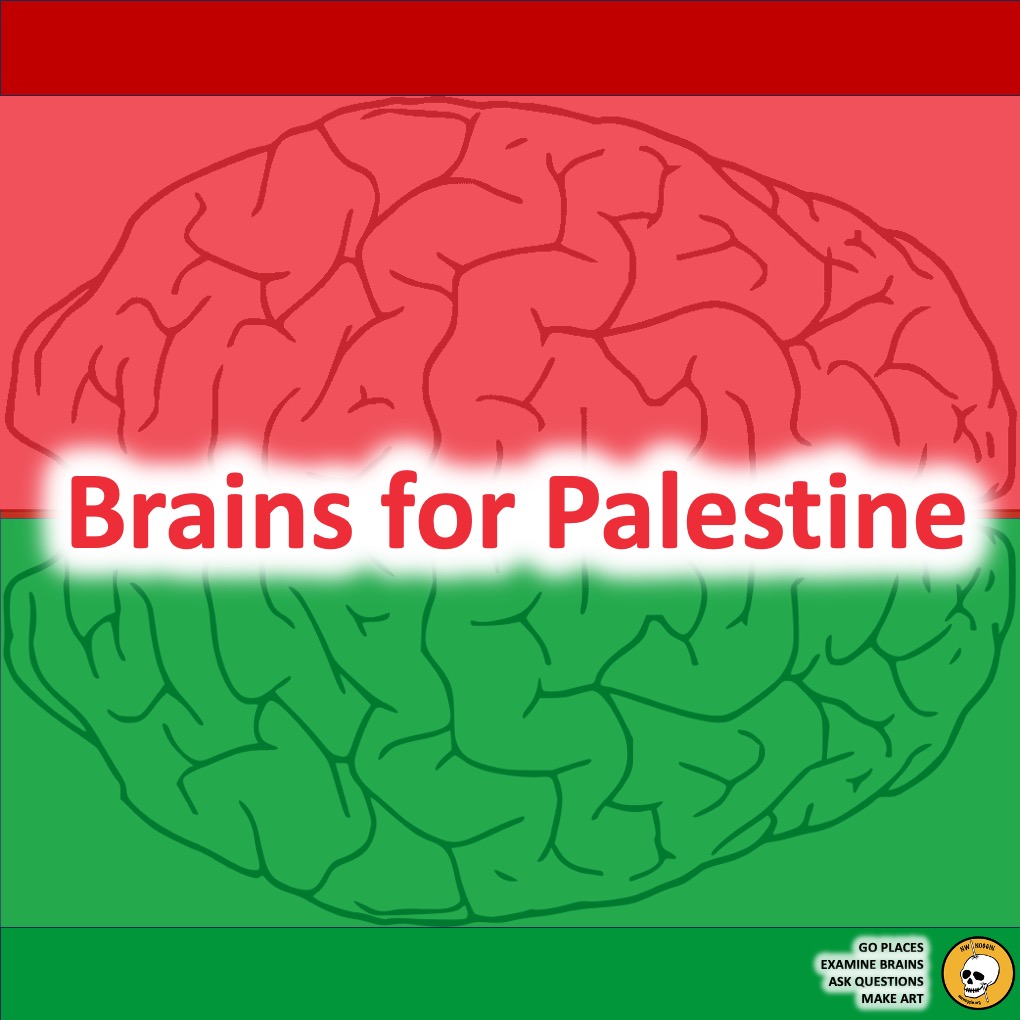
Second Visit in March
We talked brain cells!
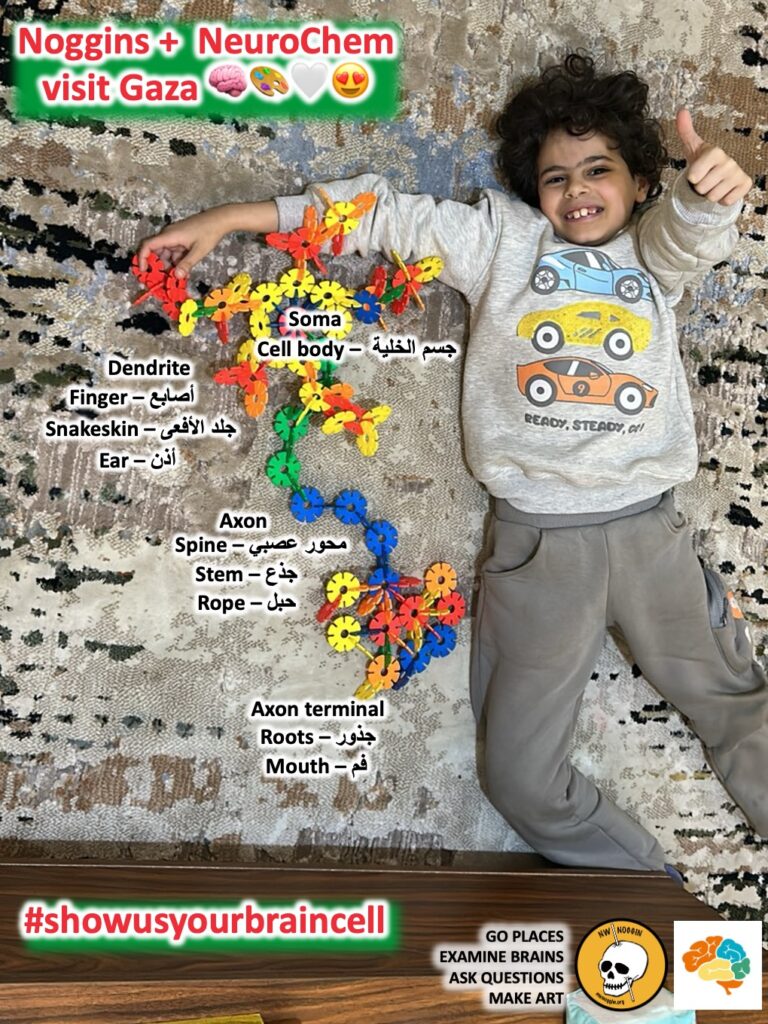
Together we shared the brain cells we’d crafted from various found objects, and enjoyed looking at the parts of cells and describing what we individually saw. For example, the dendrites of neurons looked like branches to early European scientists, who named them dendrites (or branches in Greek).

The children in Gaza saw many things in those dendrites, including fingers (أصابع) – but they also named them based on what they do. Dendrites, or أصابع, receive messages from other neurons, and listen to the environment, like our ears. So ear (أذن) was another suggestion!
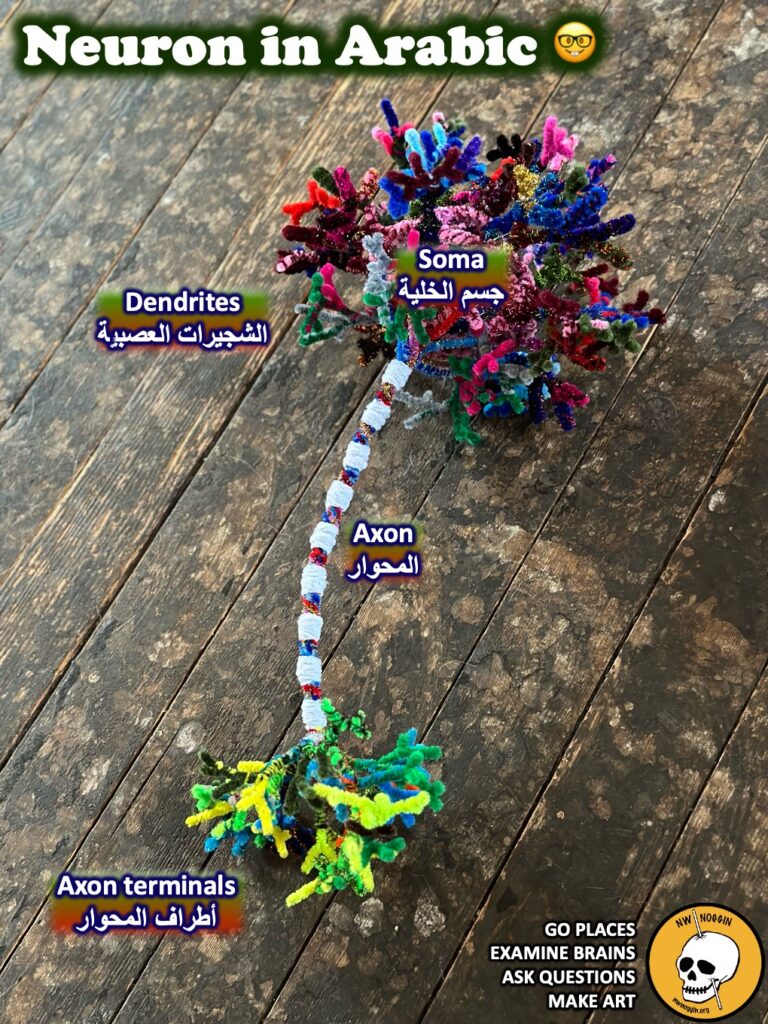



Third visit in April
We met a third time in April, and this time the students from BIS Gaza worked on more brain cells!



Thank you Abdulrahman for arranging such a beautiful opportunity, one we hope to repeat this spring. Thanks Noggin volunteers for sharing your insights and knowledge and art of the brain!
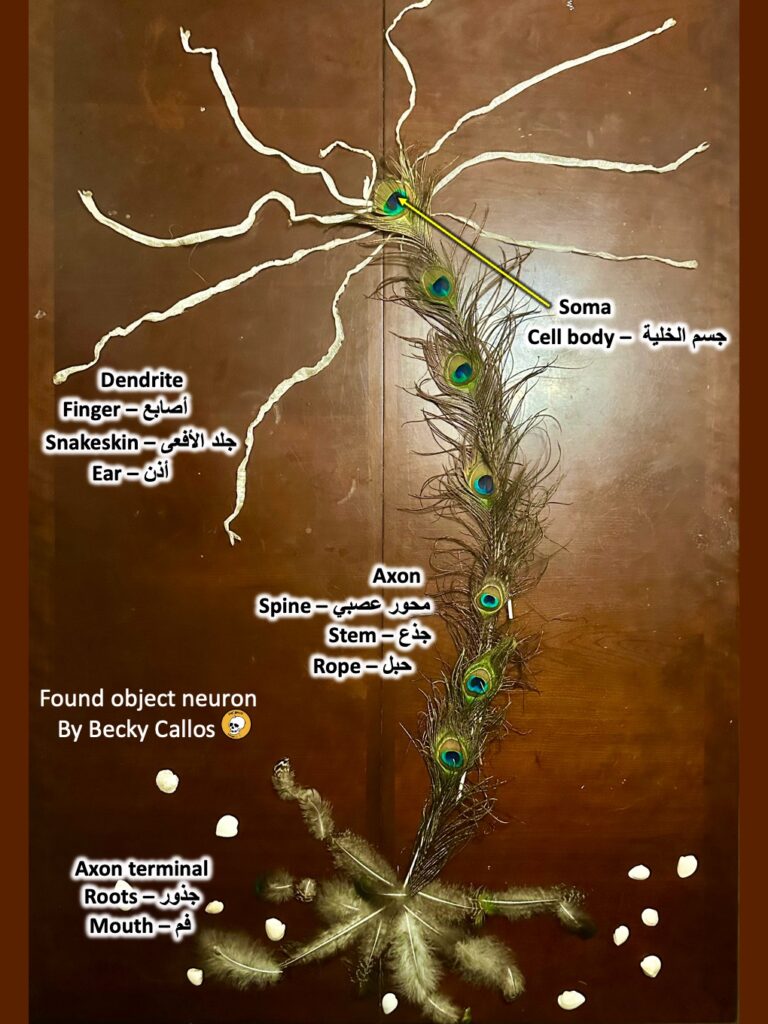
And a tremendous THANKS to all the young people in Gaza, whose creativity, questions, curiosity, excitement and specific interests in quieting racing thoughts before bed, fight or flight, memory, sleep, development, autism, and the power of art to heal we’ll be thinking about for a long time.




